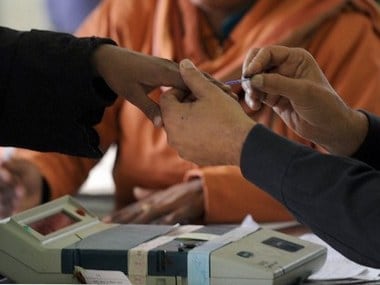Let’s get one thing straight, estimating the cost of election campaigns anywhere around the world is not an easy task. Political party funding during elections is one of the most contentious topics around, and the best most countries can come up with are reasonably educated guesses. What we can tell from available data is that it costs more and more to win elections. Campaigns to win elections require spending by the candidates, political parties and in some countries, by the government. Campaign finance is frequently financed by a mix of public and private funding, and because electoral systems are different across countries, the figures on election campaign spending are not strictly comparable. However, the absolute figures do provide an indication of how much candidates/parties are spending to win votes. The chart above provides rough estimates of how much the previous or upcoming elections cost in different parts of the world. (Move your mouse over the coloured portions to see the cost of elections in India, Indonesia, the US, the UK, Germany, Brazil and Mexico.) (Please note that the geographical area indicated by Indonesia is incorrect, and requires updating by Datawrapper) Here is a quick guide on the number of eligible voters in each country mentioned on the chart and the main funding sources for political parties. (For easy comparison, all figures have been converted to US dollars.) India: 814 million voters Elections are completely funded by private parties, with money coming in through party membership subscriptions and donations (individual and corporate). Electoral rules permit candidates to spend $114,000 to contest parliamentary seats. With 543 seats up for grabs in the upcoming general elections, the total spending should amount to just around $62 million, notes this article in The Diplomat. [caption id=“attachment_1435297” align=“alignright” width=“380”]  AFP[/caption] However, fund-raising from Indians overseas, advertising and bribery are expected to raise the spending much higher to a steep $4.9 billion. That makes these elections the most expensive in India’s history. However, with low transparency levels, most of the campaign funds is estimated to come from black money, notes this Firstpost blog post . United States: 150 million voters The presidential elections are heavily privately-funded, with much of the funding coming in via donations to political parties, donations to individual candidates, and from super political action committees, which are allowed to raise and spend unlimited amounts of money from corporations, unions, individuals and associations, as a Washington Post report shows. Lately, there has been concern that spending levels are surging because of contributions by special-interest groups dominated by individuals and organisations. UK: 49 million voters Election funding consists of a mix of heavy private funding and some public funding. Public funding is available on a proportional basis – to the extent of a party’s representation in Parliament from the previous election. Private funding comes primarily from party membership subscriptions, and donations from companies, trade unions and individuals. And if you thought that Indian politics has murky financial sources, think again. From 2006, political funding came under the scanner as worries grew that political parties were too dependent on wealthy donors. Indonesia: 190 million voters Indonesia faces general elections in April-May and a presidential election in July. Elections are heavily privately financed, although candidates already in government are known to use the state budget and institutions to promote their campaigns. Preliminary campaign budgets have been reported at around $76 million so far, according to a RSIS report. The government will also spend around $1 billion on the elections, organising the logistics of polls, according to a story in the Financial Times. The Indonesian election system is an “open list”, which means the electorate votes for the person rather than the party. Candidates spend their own money, borrow from creditors and receive individual and corporate donations in their pursuit to win elections. Transparency of funding sources remains a problem, the RSIS report notes Germany: 62 million voters Germany’s elections are primarily publicly funded. And elections are not as expensive compared with say, US Presidential elections. The parliamentary system makes the party more important for the elections, not the candidate, according to a Washington Post report. Regulations also restrict political advertising on television and expensive fund-raising dinners are also a no-no. Interestingly, there is also no negative advertising during election time. Brazil: 137 million voters Brazil has a mix of private and public funding for election campaigns, with an estimated $2 billion spent on political parties and candidates in the 2010 presidential election, according to a CNN report. Nearly 98 percent of winner Dilma Rouseff’s campaign donations came from corporations, the report noted. Clearly, corporate influence on politics is strong, even as corruption remains a big problem. Mexico: 67 million voters Mexico’s system is completely publicly funded, meaning that parties receive money from the Federal Electoral Institute on a proportional basis (based on representation) and cannot accept donations from other sources. The system costs taxpayers over $2 billion (between 12 and 13 billion pesos per election) per presidential cycle–one presidential and one midterm election, according to the blog ‘observingbrazil’. This story was first published in Firstbiz.com
Political party funding during elections is one of the most contentious topics around, and the best most countries can come up with are reasonably educated guesses
Advertisement
End of Article


)
)
)
)
)
)
)
)
)



